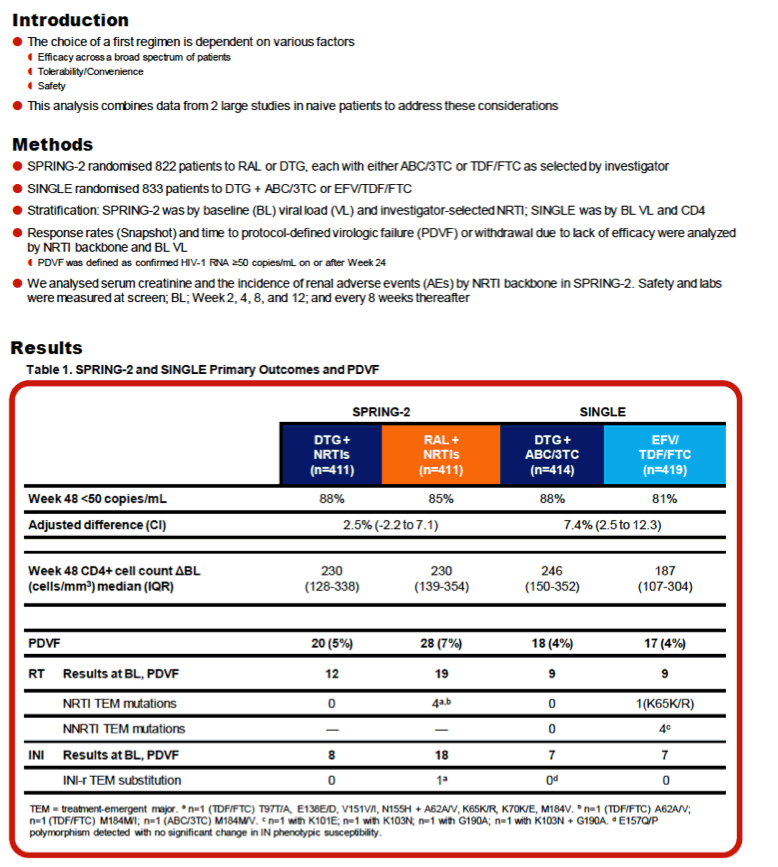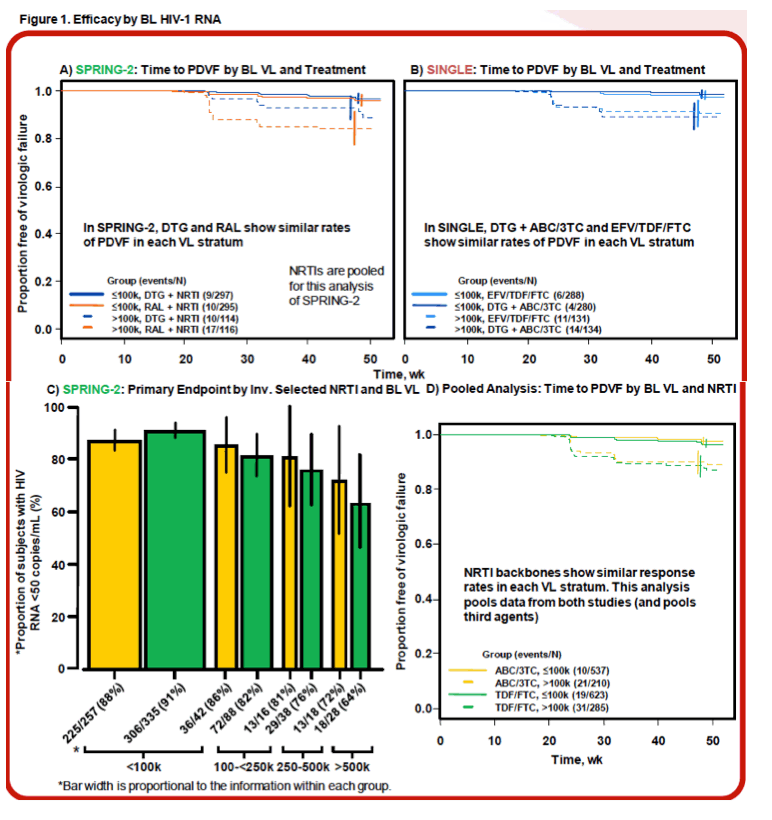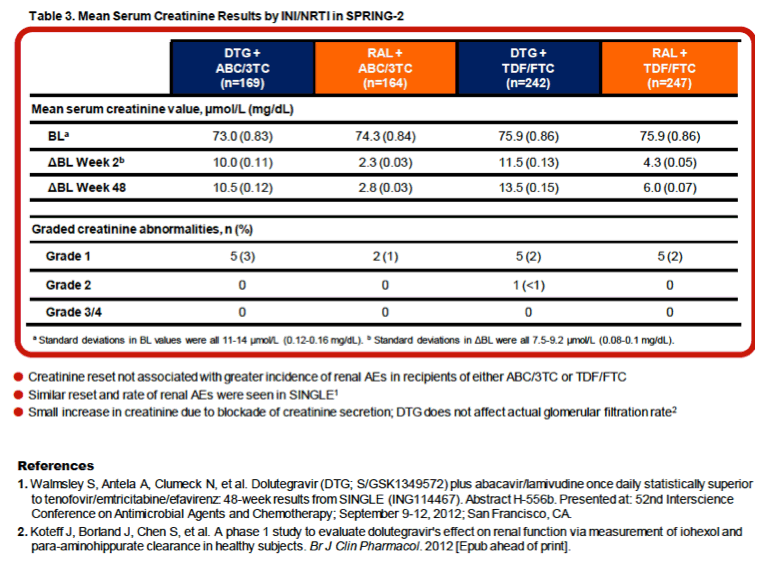 |
 |
 |
| |
Dolutegravir Treatment Response by Baseline Viral Load and NRTI Backbone in Treatment-Naive, HIV-Infected Individuals
|
| |
| |
Reported by Jules Levin
Glasgow 2012 Nov 11-15
11th International Congress on Drug Therapy in HIV Infection
J Eron Jr,1 JK Rockstroh,2 A Pozniak,3 J Elliott,4 C Small,5 M Johnson,6 C Brennan,7 K Pappa,7 RL Cuffe,8 and the SPRING-2 and SINGLE Study Teams
1University of North Carolina at Chapel Hill, Chapel Hill, NC, USA; .Department of Medicine I, University of Bonn, Bonn, Germany; 3Chelsea and Westminster Hospital, London, UK; 4The Alfred Hospital, Melbourne, Australia; 5New York Medical College, New York, NY, USA; 6Carolinas Medical Center, Charlotte, NC, USA; 7GlaxoSmithKline, Research Triangle Park, NC, USA; 8ViiV Healthcare, London, UK

ABSTRACT
Background: In two 48 week studies in naive subjects, dolutegravir (DTG) with NRTI of choice has shown non-inferiority to raltegravir (RAL) and, with ABC/3TC, superiority to Atripla. Factors that influence choice of NRTIs included viral load, resistance and safety.
Methods: We analysed response rates and time to virologic failure by NRTI backbone and baseline viral load in the pivotal DTG naive studies. SPRING-2 randomised participants to DTG 50 mg QD or RAL 400 mg BID, each in combination with investigator selected NRTIs (TDF/FTC or ABC/3TC). SINGLE randomised participants to DTG 50 mg + ABC/3TC QD or TDF/FTC/EFV (Atripla) QD. In SPRING-2, changes in serum creatinine were examined by INI and NRTI backbone.
Results: The two studies randomized and treated 1655 subjects, of whom 249 (15%) were female, 388 (23%) non-white, 495 (30%) had HIV-1 RNA >100,000 c/mL, and 224 (14%) had CD4 count <200 cells/mm3.

Primary analyses demonstrated non-inferiority of DTG to RAL in SPRING-2 (∼=2.5%; 95% CI: -2.2% to +7.1%, excluding -10%), and superiority of the DTG regimen in SINGLE (7.4%; +2.5% to +12.3%).
In SPRING-2, response rates by NRTI backbone were comparable in each viral load stratum. In SINGLE, a 7% difference in response (favouring DTG + ABC/3TC) was observed in each viral load stratum. Exploratory analyses examining time-to-virologic failure showed no difference in response rates between the NRTIs irrespective of baseline viral load or study. Resistance to INIs or NRTIs was not demonstrated in any subject on DTG-based therapy through 48 weeks. Withdrawals due to AEs on DTG-based regimen were few (2%) in both studies. In SPRING-2, no significant differences were observed in serum creatinine change from baseline to Week 48 by NRTI backbones.
Conclusions: In SPRING-2 and SINGLE, DTG was effective with both ABC/3TC and TDF/FTC, and in subjects with high and low viral load. DTG was well tolerated in both studies. Renal safety also was similar by NRTI backbone. DTG is a once daily, unboosted INI that can be used effectively with either TDF/FTC or ABC/3TC backbone in treatment-naive, HIV-infected individuals.




|
| |
|
 |
 |
|
|